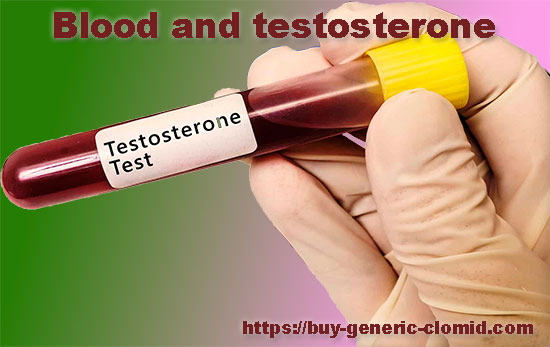So, blood and testosterone. The red bone marrow is the most important organ of the hematopoietic system in humans, which carries out hematopoiesis, or hematopoiesis — the process of creating new blood cells to replace dying and dying ones.
Hematopoiesis is the blood production that occurs in the bone marrow, due to stimulation by erythropoietin.
Erythropoietin is a hormone synthesized in the kidneys. It stimulates the formation of red blood cells in the bone marrow.
Erythrocytes are blood cells containing hemoglobin. Their main function is to deliver oxygen to tissues and organs.
Hemoglobin is a protein contained in red blood cells and carries out the exchange of oxygen between the lungs and tissues of the body.
Hematocrit is defined as the ratio of the total volume of all shaped elements to the total volume of blood.
Platelets are blood cells in the form of blood plates, whose main function is to participate in blood clotting. They are formed in the bone marrow and protect the body from bleeding, as well as react to vascular damage by forming blood clots.
Steroids and blood
Blood and testosteroneЖ When it comes to the side effects associated with the use of testosterone, the term “Thick blood” often arises, this term is not particularly scientific and does not mean what it really is.

In fact, the so-called thick blood is an increase in the amount of hemoglobin and red blood cells, which in turn leads to an increase in hematocrit. It is the increase in hematocrit that is the increase in blood density, which is due to the intake of testosterone. Since testosterone increases the secretion of erythropoietin, which significantly stimulates hematopoiesis.This is a normal situation when taking testosterone, so you should not always worry if hematocrit grows. The main thing is that the hematocrit remains within the reference values, norms.
Blood and testosterone: Norms
Hematocrit – 39-51%
Hemoglobin – 130-170 g/l
Erythrocytes – 4.2-5.7 million/ml
Platelets — 180-350 thousand/ml
In turn, increased hematocrit will lead to certain side effects. In fact, there are two of them. The first is an increase in the load on the cardiovascular system, because of the thicker blood, the movement of blood through the vessels is hampered, which leads to an increased load on the heart and blood vessels. This usually manifests itself in the form of increased blood pressure and heart rate. The second is the risk of blood clot formation, the risk of thrombosis. This is due to an increase in the number of red blood cells.
Prerequisites for an increase in hematocrit
- Smoking
- Insufficient water consumption
An increase in hematocrit, erythrocytes and hemoglobin is called Erythrocytosis. Erythrocytosis is of two types, primary and secondary. Primary erythrocytosis – occurs as a result of true polycythemia, a myeloproliferative neoplasm in which pathological cells in the bone marrow produce too many red blood cells. Secondary erythrocytosis develops as a result of a disease in which the secretion of erythropoietin increases. Erythropoietin is a hormone that is synthesized in the kidneys and stimulates the production of red blood cells by the bone marrow.
Blood and testosterone: Elevated platelets
Risk of thrombosis. An increase in platelets is called thrombocytosis. There are two types of thrombocytosis: Primary and secondary. Primary thrombocytosis, in this case, an increased number of megakaryocytes is formed in the bone marrow, which increases the number of platelets having a normal lifespan, but an incorrect structure and impaired functions. Secondary (reactive) thrombocytosis. With it, platelets function normally, and the cause of the disease itself is some other deviation.
Take even clomid very carefully. When taking pharmacology, secondary thrombocytosis develops. It passes after the withdrawal of drugs.
Methods of reducing hematocrit
Phlebotomy
Phlebotomy is bloodletting. The procedure is resorted to in the case of polycythemia, a hematological disease in which too many red blood cells, leukocytes, platelets are produced in bone marrow cells, which can lead to thrombosis.
Erythrocytapheresis
Erythrocytapheresis is a method of extracorporeal hemocorrection based on the removal of certain cellular components of the patient’s blood – erythrocytes. The indications for it correspond to the indications for ordinary bloodletting.
Blood and testosterone: Conclusions
Using chemotherapy drugs to reduce hematocrit, while increasing the risk of developing leukemia, instead of doing erythrocytopheresis or phlebotomy, which are very safe, does not seem to be a very good idea.
In general, discussing the number of side effects and the effectiveness of interferon alpha, hydroxyurea or pipobrovan, which, by the way, is more preferable than hydroxyurea, would make sense if not for one thing — erythrocytapheresis or phlebotomy have no side effects at all and they are more effective.
From the author: My guess is that in general someone thought of using these drugs instead of draining blood just because he was too lazy to go and drain the blood, since it’s obviously easier to take a pill. I’m still in shock that someone is seriously considering taking such drugs. Yes, hematocrit 54% will be safer than taking hydroxyurea. It will be safer to do nothing here than to do something.